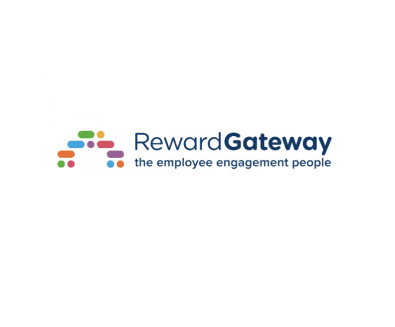Horizon achieves desired behaviors and outcomes through a values-based, social recognition program.
By Debbie Bolla
Ask Marie Crea, director of HR for Horizon Blue Cross Blue Shield of New Jersey, how she would describe the organization, and she would tell you that it’s employee-centric. The healthcare insurance provider is in the business of ensuring quality service for its members, and that level of service is literally in the hands of its employees. So when engagement scores fell a hair under benchmark level in 2013, Crea knew it was time for HR to step it up and roll out a modernized, socially-driven recognition program with the same name.
Employee recognition has been a part of Horizon Blue Cross Blue Shield of New Jersey’s core strategy during the entirety of Crea’s 12-year tenure at the company. “What we need to accomplish as an organization is a challenge, and we know we have to do that through our employees,” she says. Employee recognition is one lever that is used to accomplish company goals.
The original approach was dispersed, with each division managing and delivering it by their own accord. A manual program, “Step It Up” was driven by managers distributing hand-written thank you notes, accompanied by gift cards, at company meetings. Although this approach was more consistent and aligned to the core of recognition, it still lacked a connection to company strategy and culture.
When it came to designing an effective program in this case, the third time was the charm. The new iteration of Step It Up is a recognition program that is hitting on all cylinders. Through a partnership with Achievers, Horizon Blue Cross Blue Shield of New Jersey empowers employees through recognition in several ways. The points-based program allows employees to select their own rewards, from the most highly sought-after prizes such as iPads and headphones to lavish trips to Paris. And at the heart of the new approach is an online newsfeed, similar to Facebook, on which employees do the recognizing by acknowledging the good work of their peers. “Everyday Recognitions” fall into several categories, including bright idea, continuous improvements, problem solving, teamwork, and everyday leadership.
“Employees love that they can give everyday recognition to others,” Crea says. “That one little thank you can grow exponentially.”
The recognition can extend beyond a single statement because the platform allows managers to “boost” the recognition and reward it by awarding points from their pool. Other team members can also “like” the statement or add personal comments. Email notifications come in as soon as feedback is posted, giving employees real-time feedback. Since the program’s inception in 2014, there have been 57,000 peer-to-peer recognitions. This overwhelming response demonstrates the value of social recognition: an approach that’s really showing its muscle in the industry.
“In the last quarter, 58 percent of the recognitions across all of our customers’ platforms were social recognitions,” says David Brennan, general manager for Achievers. “It’s peers acknowledging hard work and efforts. This creates a culture of people recognizing each other.”
Calling Out Core Values
Leadership at Horizon Blue Cross Blue Shield of New Jersey is also very much on board with the Step It Up program, and support started on day one. When it was launched, the CEO and executive members communicated the value of program via videos and other tools, which drove an 82 percent adoption rate in just the first month, which has now increased to 97 percent.
“If the leadership team is participating, that drives usage within the organization,” says Brennan.
Crea agrees: “Horizon leadership continues to be the top users of the system.” Managers have the ability to align their acknowledgments to company values and desired behaviors. “Core competency” recognitions include communicating with impact, adaptability, customer focus, driving for results, developing self, and others.
“This stems from the tenant of what gets recognized, gets repeated,” explains Crea. “Core values are the behaviors we want our employees to exemplify. For example, customer focus is a core competency of the organization. You will see in the system how an employee went above and beyond for a member. That’s a behavior we want to encourage and see repeated. Peers will see what behaviors get recognized and will do it too.”
Managers have a certain amount of points to allocate to team members throughout the year. These points are rewarded through core competency recognitions as well as boosts. Managers can even purchase more points if they have a special project or event coming up. For example, the company hosted an important training on member experience and incentivized employees to take it early by offering the chance to win additional points. This strategy increased interest, response, and participation.
The Results
Some of the main rewards for Crea and her HR team members are the measurable results of the program. First of all, employees love it, she says, with adoption rates at 97 percent and an average of 15 recognitions per employee per month. Top performers earn a monthly average of 19 recognitions. Since the program launched, there have been 20,000 award redemptions.
Horizon Blue Cross Blue Shield of New Jersey’s 2016 employee survey showed the recognition program as best in class compared to the industry average, with an increase of 14 percentage points. Employees have also provided valuable, personal feedback by sharing that Step it Up “gives us all the opportunity to highlight our colleagues’ great work” and “makes employees strive to work at their optimal level.”
From a leadership perspective, Crea and her team look at how Step It Up has impacted turnover and engagement. In 2013, the annual survey reported engagement just below the industry benchmark; in 2016, engagement scores increased by 6 percent, above the benchmark by 5 percentage points. As for turnover, the needle is moving in the right direction as well: In 2013, the organization experienced 15 percent attrition; in 2014 it was measured at 10 percent; it was at 8 percent for 2016, and 6 percent is the anticipated rate for this year.
“It’s early for us to establish a direct correlation, but the program is having an impact,” says Crea. “Recognition drives engagement and performance results, which positively impacts profitability and customer satisfaction.”
But perhaps even more than all of this, Crea has seen how Step It Up has played a role in shaping the culture of Horizon Blue Cross Blue Shield of New Jersey. “It helps foster pride in the organization,” she says. “When I read what is written about employees and what they are doing for our members, it makes me proud to be here.”
SIDEBAR: Promoting the Program
A 97 percent adoption rate does not come without effort. As with the rest of the Step It Up program, encouraging users to get into the game was crafted strategically. Crea says it is part of the entire employee lifecycle, including during the hiring process and at orientation.
Employees also earn points at various stages and milestones and for specific events, including:
- The onboarding process
- Years of service milestones
- Graduate and certification programs
- Participating in the customer referral program
- Annual employee thank you day














